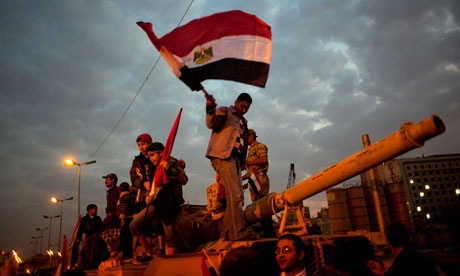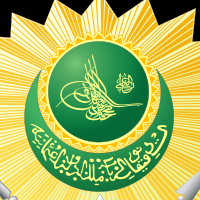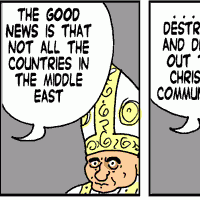![]()
Sun, June 19, 2011 | The Meir Amit Intelligence and Terrorism Information Center
The Muslim Brotherhood – Chapter 5: The Muslim Brotherhood’s struggle against the various Egyptian regimes and other challenges facing it
The Muslim Brotherhood is an Islamic mass movement whose worldview is based on the belief that “Islam is the solution” and on the stated aim of establishing a world order (a caliphate) based on Islamic religious law (Shariah) on the ruins of Western liberalism. With extensive support networks in Arab countries and, to a lesser extent, in the West, the movement views the recent events in Egypt as a historic opportunity. It strives to take advantage of the democratic process for gradual, non-violent progress towards the establishment of political dominance and the eventual assumption of power in Egypt and other Middle Eastern countries.
The challenge posed by the Egyptian regime
In its 83-year existence, Egypt’s Muslim Brotherhood has become the largest socio-religious movement, with the most extensive deployment and influence among Sunni-Muslim societies in other countries. Its worldview, based on the belief that “Islam is the solution” to all personal, social, and political problems, has struck roots across the Middle East, allowing it to become the major opposition to the regime in Egypt and many other countries in the Middle East (for example, Jordan and Syria).
Since the 1950s, all the governments in Egypt have perceived the Muslim Brotherhood as their major opponent due to its radical-Islamic ideology and success in penetrating state institutions. The movement operates a nation-wide network of welfare, health, and preaching services (da’wah), relying on a variety of funding sources (most of them outside of Egypt), thus creating an alternative to the inefficiency of government apparatuses in dealing with the needs and difficulties of the common Egyptian citizen.
The combination between social activity, filling the vacuum created by the regime, and distributing an authentic cultural-religious message that appeals to broad sectors of the population is one of the reasons for the considerable popularity gained by the movement among the Egyptian public, which has become a source of great irritation for the Egyptian regime.
The Egyptian regime’s approach to dealing with the Muslim Brotherhood has been multi-dimensional, consisting of a wide variety of methods, from violent suppression to local and temporary arrangements. The targets and intensities of the measures taken against the movement changed from ruler to ruler and from period to period; as a rule, however, the relations between the regime and the movement follow a similar cyclic pattern: the Muslim Brotherhood lowers its profile as the regime steps up activity against it, the regime’s suppression diminishes as the movement tones down its activity and obscures its objectives, the movement reasserts itself once again and challenges the regime, and so the cycle continues.
The following are some features of the struggle between the two sides:
a. On the social scene — most of the time, the regime’s activity against the movement could be characterized by “controlled acceptance”, since its social activity partly served its interests (by alleviating tensions in the weaker sectors of society). In the past decade, the regime has started taking more aggressive measures,[55] forcing the movement to reduce its institutionalized da’wah activity and, in many cases, move to “individualized” da’wah. Nevertheless, its decentralized structure, numerous funding sources, and variety of social services it provides give the movement a high degree of resilience against the regime’s measures.
b. On the ideological scene — the regime’s efforts to compete against the movement for the hearts of the common people or effectively monitor the contents of its preaching activity (with the assistance of the religious establishment) have resulted in a failure, and have even invigorated Islamization processes in Egypt. In the years prior to Mubarak’s fall, the regime attempted to undermine the movement’s popularity by arresting members, particularly those belonging to its reformist bloc, which supported greater involvement in politics and was widely popular with the younger generation. At the same time, the regime also strengthened Egypt’s Salafism[56] (as yet a non-political school of thought in Islam) as an ideological alternative to the political Islam of the Muslim Brotherhood.
c. On the political scene — the regime has done everything possible to keep the movement from amassing political power. It does so by the imposition of strict constitutional limitations,[57] suppression (using the extensive powers granted to the regime by the emergency law),[58] prevention/minimization of achievements made by the movement in elections to official state institutions,[59] and imposing arrangements with the movement from a position of power — ahead of elections[60] or during sensitive times (to ensure peace and quiet). In this sense, the regime has the upper hand. The movement understood it, and in recent decades sought to avoid conflicts with it.
d. In the preventive scene — the regime occasionally detained Muslim Brotherhood activists and released them (a “revolving door” of sorts, mostly prior to and after elections); conducted raids on its publishers and libraries and confiscated preaching materials and documents; took action against the movement’s local funding sources; and waged propaganda campaigns against the movement by portraying it as being affiliated with terrorism.
Other challenges faced by the Muslim Brotherhood until the fall of Mubarak’s regime
In addition to the challenge of surviving under the oppression and persecution by the Egyptian regime, prior to the fall of Mubarak’s regime the movement faced a series of other difficult challenges that threatened its cohesiveness, ideological attraction, and even its continued political existence. The following are the major challenges faced by the movement:
a. Questions of identity and mission: in the past decade, the movement’s activists, particularly the younger generation, have become increasingly uncertain about the movement’s identity and objectives. In this context, the main issue is whether the Muslim Brotherhood should remain a socioreligious movement with a clandestine aspect, become an open, “transparent” political party, or preserve both elements. The movement also has difficulties deciding on the fundamental issues on which its members’ opinions differ, such as the character of the state it will establish if it can assume power (an Islamic state or a civilian state with an Islamic orientation). The movement had difficulties reconciling the principles of its Islamic ideology with its political goals, and has therefore avoided providing specific answers to these questions.
b. The challenge of maintaining cohesiveness results mostly from tensions with regard to the issue of the movement’s identity and the lack of a charismatic leadership:
1) Widening differences between worldviews, particularly between the conservative school of thought, whose top priority is da’wah activity and moderate political involvement while maintaining the movement’s original religious and ideological principles; and the pragmatic school of thought, which prefers stronger political integration even at the price of giving up or diminishing some of the movement’s principles, and whose representatives support the establishment of a political party alongside the movement (in stark contrast to Hassan al-Banna’s views).[61]
2) The increase of internal power struggles and personal intrigues. The decades-long absence of a strong, visionary leader (the current general guide, Mohammed Badie, is not considered as such) has intensified internal division and compromised the movement’s ability to formulate a coherent policy. The concentration of power in the hands of the conservative faction and the institutionalization of the norm of promoting long-standing, wealthy, and well-connected members at the expense of those with skills alienates the younger generation. However, most young activists and representatives of the reformist faction remain loyal to the movement and seek to change it from within.
c. Difficulties in maintaining ideological attraction:
1) Social and technological changes, particularly globalization and the internet era, have limited the movement leaders’ ability to influence the minds of its younger activists. The latter have developed and spread an independent worldview, usually more liberal than that held by the older generations, and often critical towards the conduct of the conservative leadership. The leadership’s disregard for their ideas and demands, coupled with the increasing popularity of the “personal” and “economic” schools of Islam (driven by individualization trends and the development of consumption culture) produces potential competitors to the movement’s view of political Islam.
2) There is even evidence to suggest that regular members leave the Muslim Brotherhood for those competitors, or even for the idea of global jihad. Thus, in 1995 a group that splintered from the Muslim Brotherhood established a party called “Al-Wasat” (“The Middle”), stressing democratic, pluralist, and tolerant order. It has now been recognized as a legal party by the current Egyptian regime. It is small wonder, therefore, that the movement was not the initiator or leader of the recent events in Egypt. It played only a minor role, joining the protests only when it was certain of their intensity and with the purpose of exploiting them for its own goals.
d. Difficulty in maintaining political relevance and survivability — the Muslim Brotherhood’s considerable penetration of state institutions has been blocked by the regime. The movement has not been able to translate its parliamentary force into real influence on its policy. In addition, it avoided taking part in previous domestic protests (mostly taking part in protests involving the Palestinians and Israel as the lowest common denominator of other opposition elements, when it was able to prove its ability to bring thousands to the streets);[62] or making strong, long-term alliances with other opposition factions (due to concerns over getting into trouble with the regime, as well as its clandestine nature and differences of views and interests). Such passivity has drawn criticism from the movement itself and erodes its relevance as a political player.
e. The status of the Egyptian Muslim Brotherhood vis-à-vis its global counterpart — in the past decade, it has become increasingly evident that the Egyptian movement is losing its status with the global Muslim Brotherhood. The erosion is evident in the fact that other Muslim Brotherhood movements have become more active in challenging the Egyptian movement’s right to remain the leader of the global movement, and in the increasing popularity of Qatar-based Sheikh Yusuf al-Qaradawi in Egypt, the Arab world, and Europe (see Chapter 12).
The fall of Mubarak’s regime is perceived by the Muslim Brotherhood as a historic opportunity. The movement had already established a party — “The Freedom and Justice Party” — and is determined to use the political process (it hopes far as 40%-50% of parliament) to gain power and gradually establish its dominance in Egypt.
This comprehensive analysis of the Muslim Brotherhood (by ITIC) consists of 12 chapters. All 12 chapters are listed below:
Chapter 1: The historical evolution of the Muslim Brotherhood in Egypt
Chapter 2: The ideology of the Muslim Brotherhood
Chapter 3: The Muslim Brotherhood’s education, preaching, and social activity
Chapter 4: The structure and funding sources of the Muslim Brotherhood
Chapter 6: The Muslim Brotherhood’s stance on the Palestinian-Israeli conflict
Chapter 7: The development of political discourse in the Muslim Brotherhood and the 2007 election platform
Chapter 8: Profiles of prominent Muslim Brotherhood figures in Egypt
Chapter 9: The Egyptian Muslim Brotherhood’s ties to its branches in Middle Eastern and Western countries
Chapter 10: The Muslim Brotherhood in other Arab countries and in Europe
Chapter 11: A profile of Sheikh Dr. Yusuf al-Qaradawi
Chapter 12: Islamic jihadist organizations in Egypt ideologically originating in the Muslim Brotherhood
You can download the full study in PDF-format here
Notes:
[55] Such measures included razing structures built by the movement, preventing Ramadan fast-breaking meals, freezing financial assets allegedly affiliated with the movement, etc.
[56] Salafiyya (lit. “return to the path of the forefathers”) is a school of thought in Islam that appeared in Egypt, first as modernist intellectual, which later undergone changes and gave rise to additional schools of thought. In general, the Muslim Brotherhood is one of the incarnations of Salafiyya. In the above context, however, the term is used to refer to the stricter (in the religious-legal sense) branch, which developed later and was influenced by modern Saudi Wahhabism (a non-militant branch that preaches obedience to the regime). This branch prohibits any liberal interpretation of the Muslim holy texts and demands adherence to the written text of the Quran, including the imitation of the physical aspects of life (customs, dress, etc.) during Prophet Muhammad’s time as they are depicted in the Quran.
[57] Among other things, the regime constitutionally banned the establishment of religious-oriented parties, which made it difficult for the movement to present a presidential candidate on behalf of the party, while setting hard-toattain conditions for presenting an independent presidential candidate (not on behalf of any party).
[58] For example, by sending detained Muslim Brotherhood leaders to a court martial with no possibility of appeal.
[59] For example, suspending elections to trade unions; in the case of parliament or local elections — deliberate division of election regions to make it difficult for the movement’s candidates to attain enough votes to get seats; arresting candidates and/or eliminating/weeding out the candidacies of movement members (which was also customary in elections to student organizations) and forcing it to withdraw from the race; and forging elections results.
[60] For example, arrangements on the number of candidates presented by the movement.
[61] Some go as far as to demand that the movement be transformed entirely into a party. This school of thought, also known as wasatiyya (supporters of the middle ground) has apparently lost some of its power and is currently not represented in the general guide’s office.
[62] One example is the protests that took place during Operation Cast Lead (January 2009), led by Muslim Brotherhood activists and attended by tens of thousands of people.



 RSS
RSS











The Muslim Brotherhood’s struggle against the various Egyptian regimes and other challenges facing it #Egypt #Islamism http://bit.ly/poGeGh
[…] Chapter 5: The Muslim Brotherhood’s struggle against the various Egyptian regimes and other challenges facing… […]
The Muslim Brotherhood’s struggle against the various Egyptian regimes and other challenges facing it #Egypt #Islamism http://bit.ly/poGeGh
[…] Chapter 5: The Muslim Brotherhood’s struggle against the various Egyptian regimes and other challenges facing… […]